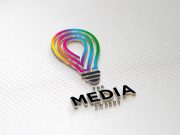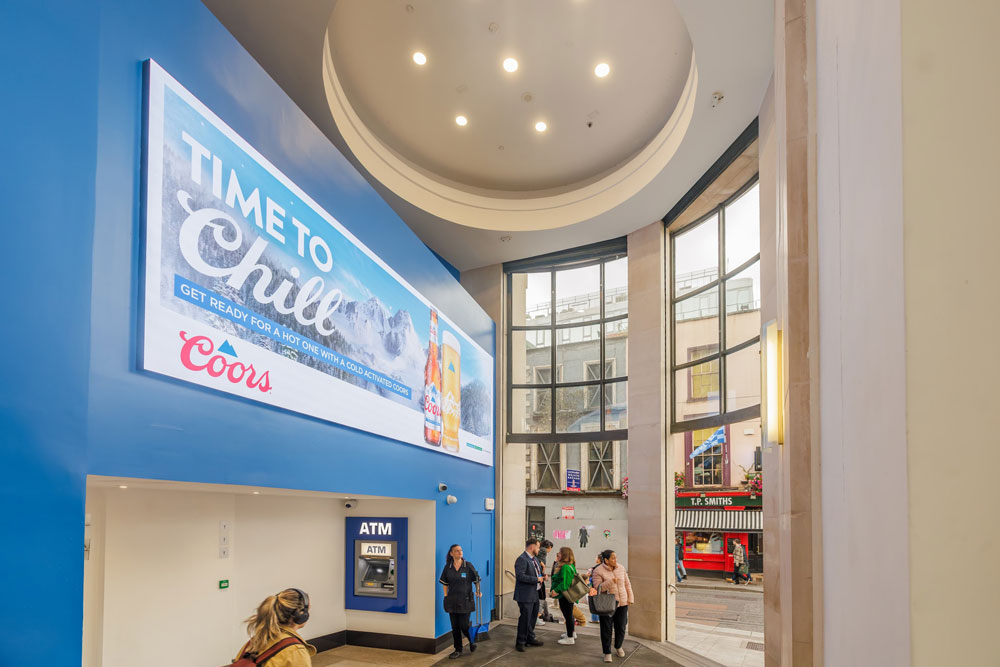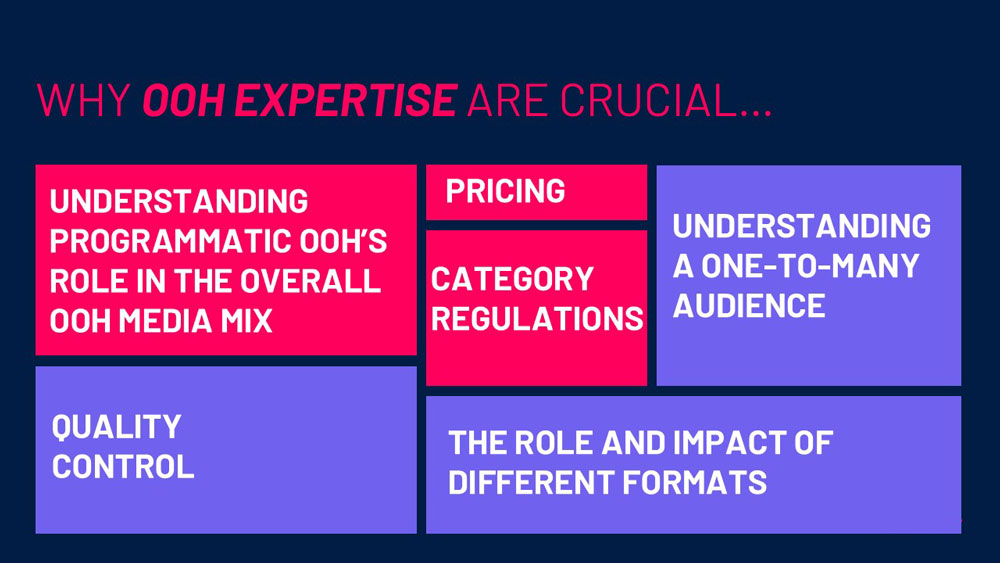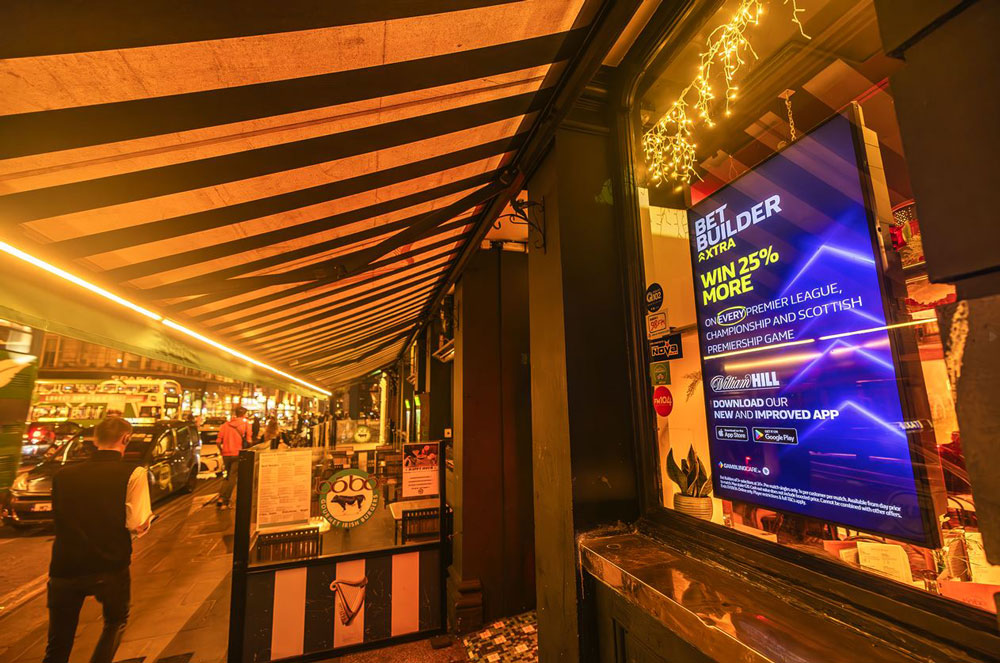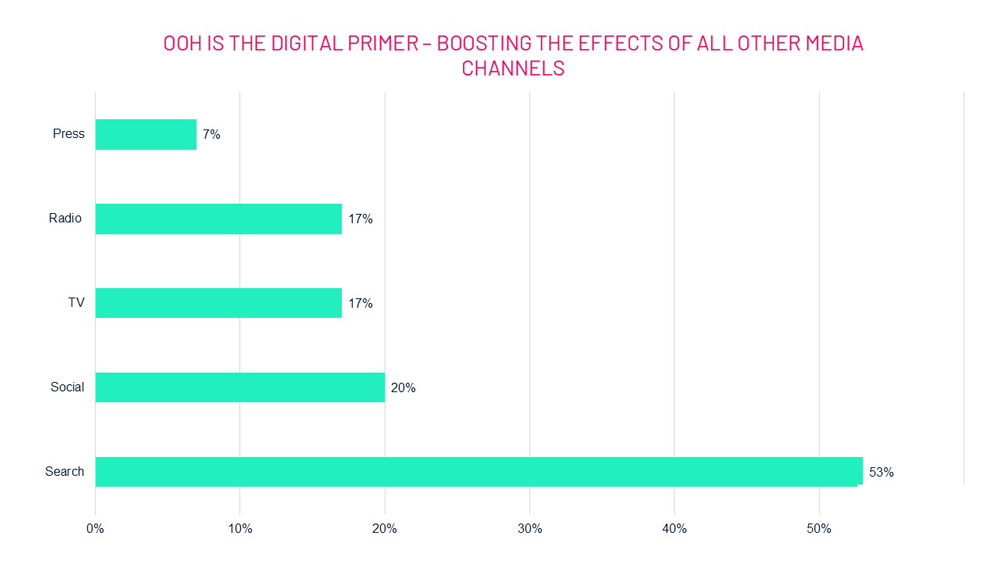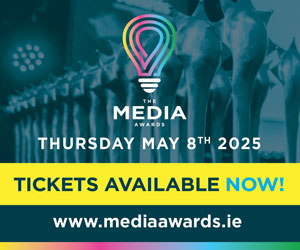 It may have taken some time to take off but now that it is well and truly established, programmatic out-of-home advertising has finally taken off and has become an important consideration for brands looking to get additional cut-through for their campaigns, writes Eoin Carroll.
It may have taken some time to take off but now that it is well and truly established, programmatic out-of-home advertising has finally taken off and has become an important consideration for brands looking to get additional cut-through for their campaigns, writes Eoin Carroll.
PrOOH, or programmatic OOH, began gaining global traction in 2016. At that time, advertisers were seeking more optimised targeting solutions, big data was in high demand, and online media channels were consuming quite the share of advertising budgets.
In Ireland, the term PrOOH was initially ignored. The lack of data, the belief that OOH shouldn’t be sold that way, all stood as obstacles to Programmatic OOH’s growth in this market. Fast forward to 2024, we’ve witnessed a surge in interest across various sectors, spanning from alcohol brands to automotive giants, and even newspapers such as the Sunday World.
But what is PrOOH? Put simply, programmatic advertising is the automated buying and selling of ad inventory using technology and software – a supply-side platform (SSP) selling space from media owners, connected to a demand-side platform (DSP) buying advertising from brands and agencies.
The platforms aggregate all the data from both sell and buy sides to efficiently buy the most relevant advertising plays for the brand, based on the audience and campaign parameters they’re looking for, in near-real time.
This piece provides an education into PrOOH alongside, how and when it should be used.
When it comes to programmatic OOH, there are many nuances for consideration when buying:
This is why teaming up with an OOH agency is crucial. Using knowledge and expertise of the medium, our programmatic team works closely with our planning team to make sure we understand your’ needs, how you want to transact with us, and how we can leverage all our capabilities to best serve you and deliver the desired results.
While Digital Out of Home (DOOH) relies on broader metrics such as reach, PrOOH uses data to provide detailed insight into campaign performance. It has the capability to set specific conditions based on external factors that will trigger a slot of purchase. The exciting part is there is practically no limit to the types of data that can be used to trigger content.
What opportunities does PrOOH unlock?
Audience Optimisation
When buying programmatically, advertisers are buying an audience.
With so much data at our fingertips, we now better understand consumer behaviours and mindsets, allowing us to connect with them more effectively. Whether it’s proximity to key locations, targeting neighbourhoods, or specific demographics, advertisers are reaching consumers at the right time. This approach increases effective reach by boosting visibility with a specific target group, making sure ads are only shown when the right audience is present.
Take Specsavers as an example, their target audience was putting off health related tasks on the back of nervousness and fear of COVID in retail environments. We needed to get them to make a spontaneous decision during the limited time frame that they were already out of home. The resulting idea was to use dynamic creative based on the live appointment feed to push specific, store-relevant messaging in real-time. Running the campaign programmatically meant flexibility in up-weighting and down-weighting locations based on required store support. Coupled with our targeting below, this ensured the most efficient use of budget:
- Talon optimised towards key movement times for our target audience (e.g. when they are more likely to do their grocery shop).
- Time targeting mapped to Specsavers stores opening hours for each store.
- Demographic Optimisation based on age profile.
- Geotargeting with proximity to Specsavers stores.
Effective Reach at Key Consumption Moments
Using one or more data triggers to drive PrOOH can enhance the effectiveness of the campaign. An industry study called “The Moment of Truth”, demonstrates the benefits of making copy as relevant as possible to the audience. Referencing relevant content or moments on top of displaying the campaign at the most relevant time can increase brain response in audiences.
Brands can leverage environmental data such as time of day or weather triggers to maximise contextual relevance by dynamically serving the ads based on the data associated with each play.
This year, William Hill’s strategy was to dine out on key consumption moments. With 2024, shaping up to be another busy year for sports they spotted an opportunity on the penultimate weekend of the Premier League by targeting screens in sports bars. Their creative called out each match (relevant moment) alongside the real-time betting odds (relevant content). The campaign ran only during match times, perfectly positioning themselves in the heart of the action and prompting consumers to download the app. The campaign was so successful that they have continued it throughout 2024 for other sporting events.
When is the right time to use PrOOH?
But, like everything there’s always a time and place when best to use.
The benefits of Programmatic OOH advertising (PrOOH) are impressive, but let’s not forget the unmatched capability of OOH in making a splash, capturing attention, and creating mental availability. Research from our colleagues in the UK, show that PrOOH can achieve a 3x times increase in purchase intent comparison to a classic OOH buy. However, when evaluating spontaneous awareness, it’s clear that a classic broadcast campaign excels in that shift. The same results applied for a number of local campaigns.
But how does PrOOH stack up against its digital counterpart? Well think of it as the perfect blend of past and present. PrOOH uses smart data and targeting to deliver the right message at the right moment, just like digital ads do – only PrOOH has the added benefit of being a one-to- many medium – in PrOOH buying, the ‘many’ being an optimised group of consumers. When used correctly PrOOH can enhance your campaigns reach and impact. Proving that both worlds can coexist and thrive together.
Over the last year there has been increased desire from advertisers and brands to use programmatic OOH (PrOOH). As new media owners get on board and new OOH environments become available, this growth will only excel. The high degree of flexibility, responsiveness, and minimal lead times makes this way of buying attractive. Not to mention the significant evidence pointing to the benefits of using an omnichannel advertising strategy. OOH boosts the impact of other media channels.
PrOOH gives digital buyers the chance to reach people whether they’re online or out in the real world. In H1 2024, our brand count of advertisers has grown by 85%, with existing OOH users complementing their OOH campaigns with PrOOH at key consumption moments.
Curious about how programmatic OOH can level up your campaigns? This is just the beginning; over the next few weeks we will be continuing our 3-part series all about programmatic OOH. Reach out to us today and let’s start thinking outside.
Eoin Carroll is Programmatic Lead with Talon.



